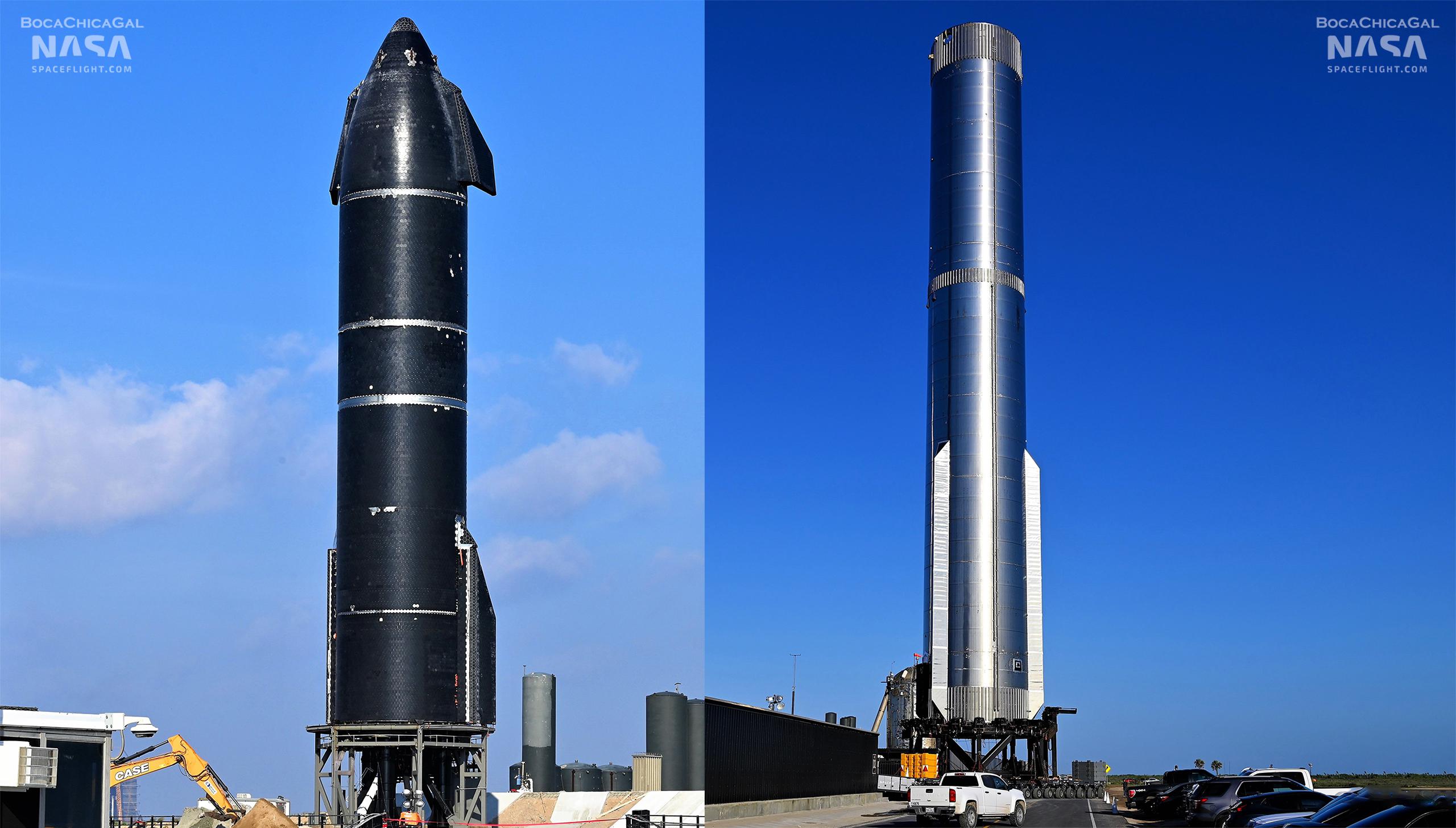
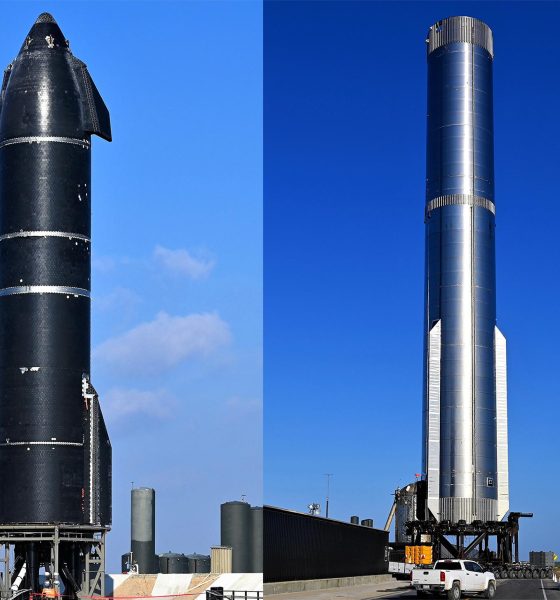
News
SpaceX CEO Elon Musk claims Starship will be ready for first orbital launch in July
CEO Elon Musk claims that SpaceX could be ready to attempt Starship’s first orbital launch as early as July.
While SpaceX has been making slow and steady progress preparing the Starship upper stage and Super Heavy booster nominally assigned to that launch debut, the odds that even just one of those two stages will be fully qualified for flight before the end of July are quite small. Musk’s claims about what will happen after that rocket is ready are even loftier.
According to Musk, after SpaceX is done preparing a Starship and Super Heavy booster for their inaugural orbital launch attempt sometime “next month,” the company will have a second ship and booster pair “ready to fly in August” and another pair every month after that. If SpaceX rapidly completes the dozens of environmental mitigations assigned to it on June 13th and receives an FAA license or experimental permit for orbital Starship launches, the company does theoretically have permission for five orbital launches out of South Texas in 2022, but the same is also true for all 12 months of 2023.
However, there is very little evidence that SpaceX is on the cusp of being able to complete a new orbital-class Starship and Super Heavy booster every month. While SpaceX is working on future Starships and is almost done assembling a second orbital-class Super Heavy booster, the pace of that work appears to be about the same as it’s been for the last 12+ months. Yes, SpaceX is almost done stacking Booster 8 and has begun stacking Ship 25. Sections of Ship 26, Ship 27, and Booster 9 have also been spotted at Starbase. But SpaceX has been unable to finish stacking Booster 8 over the last few months it’s been focused on Ship 24 and Booster 7.
Ship 24 and Booster 7, meanwhile, are making good progress but are still incomplete. Both recently completed several mostly successful cryogenic and structural proof tests and returned to SpaceX’s assembly bays, where workers have begun installing Raptor engines and applying finishing touches.
After a month of work, it appears that Super Heavy B7 may finally be preparing to return to Starbase’s launch site on Thursday, June 16th. Since it returned to the factory on May 14th, SpaceX has been installing 33 new Raptor 2 engines, applying thermal protection to those engines, buttoning up the booster’s aft end, installing control surfaces known as grid fins, and completing a few other unfinished tasks. If all of that work is complete when it rolls out again, B7 could kick off the next phase of its qualification testing – wet dress rehearsals and static fires – shortly after returning to the orbital launch site.
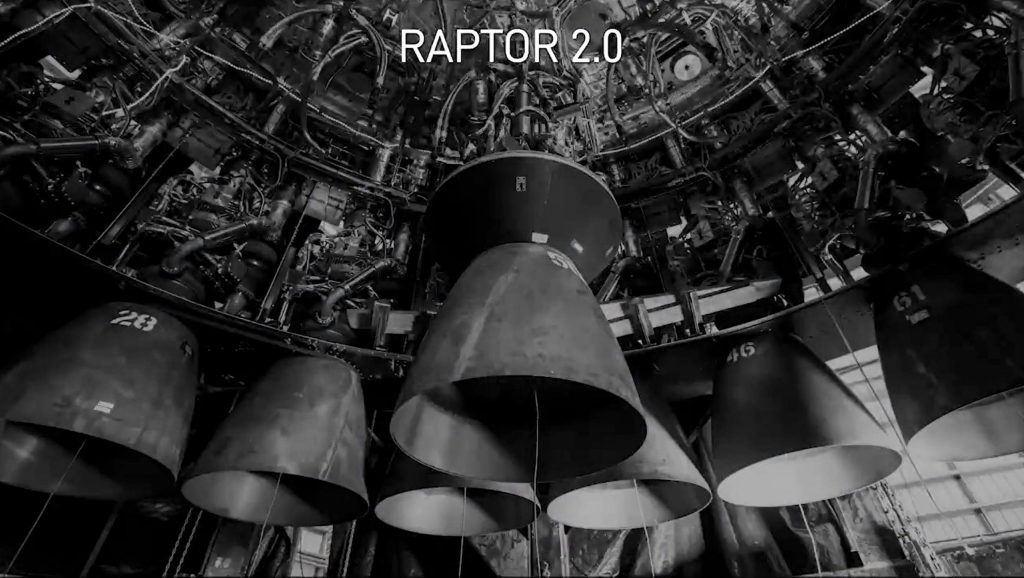
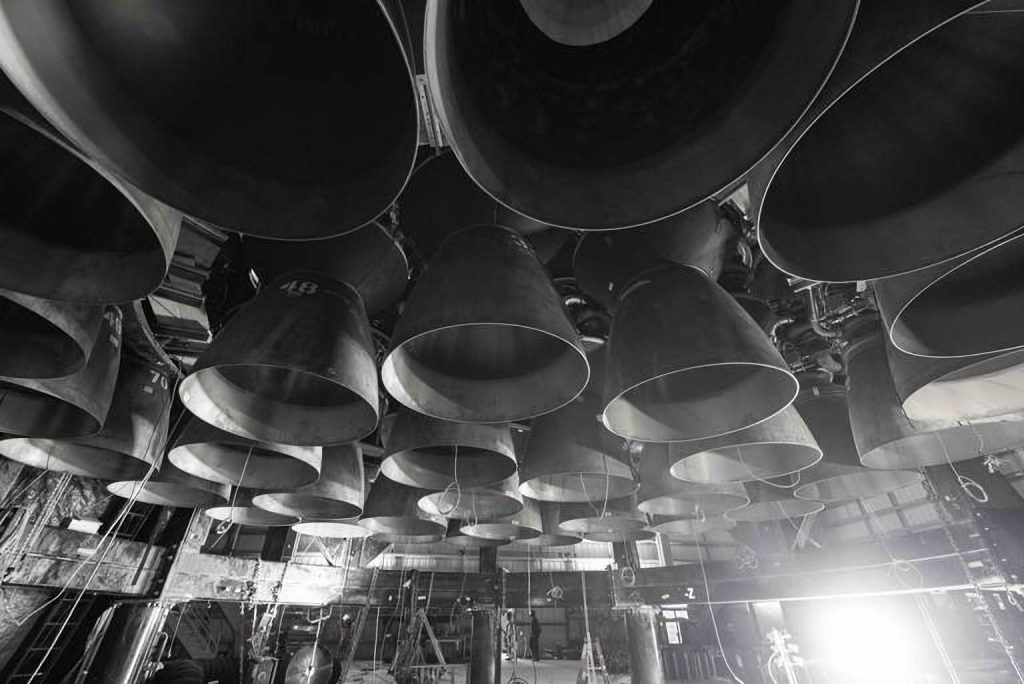
SpaceX has never attempted a full-scale Super Heavy wet dress rehearsal, in which the largest rocket booster ever built will be fully filled with more than three thousand metric tons of flammable cryogenic propellant and put through a simulated launch countdown. SpaceX has also never come close to conducting a full Super Heavy static fire, though it did fire three outdated Raptors on an outdated booster prototype a single time in July 2021.
Ship 24’s position is slightly more favorable, as it only needs six Raptor 2 engines installed. Thanks to Ship 20, which successfully completed several wet dress rehearsals and several static fires that ignited all six engines, Ship 24 will also be heading into terrain that is slightly less uncharted. Still, the Starship’s heat shield needs several hundred more tiles installed, one of four flap aerocover ‘caps’ is missing, and thermal protection will need to be installed around its Raptors.
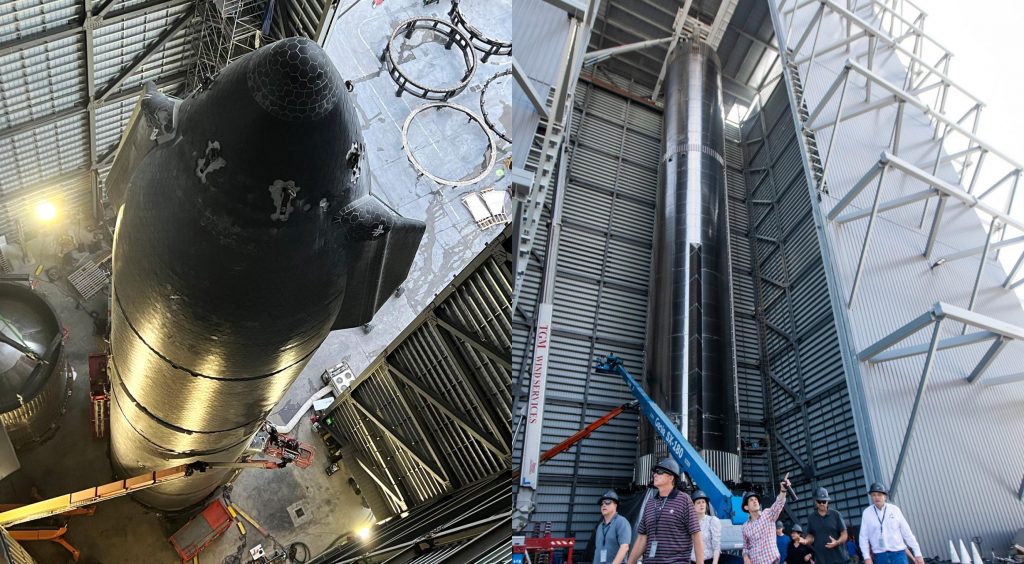
Once Booster 7 and Ship 24 are both fully outfitted and installed on their respective test stands, there’s still little reason to believe that either prototype has any chance of completing all the tests needed for flight qualification by the end of July. In fact, for B7 and S24 to be truly ready for flight before the end of July, they’d likely need to wrap up qualification testing well before the end of the month to conduct another series of tests after the pair is fully stacked. If SpaceX does not proceed with at least some degree of caution and a plan to thoroughly test both stages before a launch attempt, it will significantly increase the risk of catastrophic launch pad damage that could easily take half a year or more to fix.
More realistically, it’s reasonable to assume that Ship 24 and Booster 7 will both run into some minor issues during their first wet dress rehearsals and static fire tests, possibly requiring Raptor replacements or even minor repairs. Instead of a few weeks, serious flight qualification could take a few months. It’s also arguably far likelier that one or both stages will need to be entirely replaced by Ship 25 or Booster 8 than it is that both will be ready to launch six weeks from now. Both Booster 4 and Ship 24 suffered some degree of damage during proof tests that are in many ways much easier than the wet dress and static fire tests they’ll soon face.
Still, despite the many reasons for pragmatism and expectation management, SpaceX has never been closer to Starship’s orbital launch debut, and the odds of that debut occurring sometime in 2022 have never been better.

News
Tesla FSD fleet is nearing 7 billion total miles, including 2.5 billion city miles
As can be seen on Tesla’s official FSD webpage, vehicles equipped with the system have now navigated over 6.99 billion miles.

Tesla’s Full Self-Driving (Supervised) fleet is closing in on almost 7 billion total miles driven, as per data posted by the company on its official FSD webpage.
These figures hint at the massive scale of data fueling Tesla’s rapid FSD improvements, which have been quite notable as of late.
FSD mileage milestones
As can be seen on Tesla’s official FSD webpage, vehicles equipped with the system have now navigated over 6.99 billion miles. Tesla owner and avid FSD tester Whole Mars Catalog also shared a screenshot indicating that from the nearly 7 billion miles traveled by the FSD fleet, more than 2.5 billion miles were driven inside cities.
City miles are particularly valuable for complex urban scenarios like unprotected turns, pedestrian interactions, and traffic lights. This is also the difference-maker for FSD, as only complex solutions, such as Waymo’s self-driving taxis, operate similarly on inner-city streets. And even then, incidents such as the San Francisco blackouts have proven challenging for sensor-rich vehicles like Waymos.
Tesla’s data edge
Tesla has a number of advantages in the autonomous vehicle sector, one of which is the size of its fleet and the number of vehicles training FSD on real-world roads. Tesla’s nearly 7 billion FSD miles then allow the company to roll out updates that make its vehicles behave like they are being driven by experienced drivers, even if they are operating on their own.
So notable are Tesla’s improvements to FSD that NVIDIA Director of Robotics Jim Fan, after experiencing FSD v14, noted that the system is the first AI that passes what he described as a “Physical Turing Test.”
“Despite knowing exactly how robot learning works, I still find it magical watching the steering wheel turn by itself. First it feels surreal, next it becomes routine. Then, like the smartphone, taking it away actively hurts. This is how humanity gets rewired and glued to god-like technologies,” Fan wrote in a post on X.
News
Tesla starts showing how FSD will change lives in Europe
Local officials tested the system on narrow country roads and were impressed by FSD’s smooth, human-like driving, with some calling the service a game-changer for everyday life in areas that are far from urban centers.

Tesla has launched Europe’s first public shuttle service using Full Self-Driving (Supervised) in the rural Eifelkreis Bitburg-Prüm region of Germany, demonstrating how the technology can restore independence and mobility for people who struggle with limited transport options.
Local officials tested the system on narrow country roads and were impressed by FSD’s smooth, human-like driving, with some calling the service a game-changer for everyday life in areas that are far from urban centers.
Officials see real impact on rural residents
Arzfeld Mayor Johannes Kuhl and District Administrator Andreas Kruppert personally tested the Tesla shuttle service. This allowed them to see just how well FSD navigated winding lanes and rural roads confidently. Kruppert said, “Autonomous driving sounds like science fiction to many, but we simply see here that it works totally well in rural regions too.” Kuhl, for his part, also noted that FSD “feels like a very experienced driver.”
The pilot complements the area’s “Citizen Bus” program, which provides on-demand rides for elderly residents who can no longer drive themselves. Tesla Europe shared a video of a demonstration of the service, highlighting how FSD gives people their freedom back, even in places where public transport is not as prevalent.
What the Ministry for Economic Affairs and Transport says
Rhineland-Palatinate’s Minister Daniela Schmitt supported the project, praising the collaboration that made this “first of its kind in Europe” possible. As per the ministry, the rural rollout for the service shows FSD’s potential beyond major cities, and it delivers tangible benefits like grocery runs, doctor visits, and social connections for isolated residents.
“Reliable and flexible mobility is especially vital in rural areas. With the launch of a shuttle service using self-driving vehicles (FSD supervised) by Tesla in the Eifelkreis Bitburg-Prüm, an innovative pilot project is now getting underway that complements local community bus services. It is the first project of its kind in Europe.
“The result is a real gain for rural mobility: greater accessibility, more flexibility and tangible benefits for everyday life. A strong signal for innovation, cooperation and future-oriented mobility beyond urban centers,” the ministry wrote in a LinkedIn post.
News
Tesla China quietly posts Robotaxi-related job listing
Tesla China is currently seeking a Low Voltage Electrical Engineer to work on circuit board design for the company’s autonomous vehicles.

Tesla has posted a new job listing in Shanghai explicitly tied to its Robotaxi program, fueling speculation that the company is preparing to launch its dedicated autonomous ride-hailing service in China.
As noted in the listing, Tesla China is currently seeking a Low Voltage Electrical Engineer to work on circuit board design for the company’s autonomous vehicles.
Robotaxi-specific role
The listing, which was shared on social media platform X by industry watcher @tslaming, suggested that Tesla China is looking to fill the role urgently. The job listing itself specifically mentions that the person hired for the role will be working on the Low Voltage Hardware team, which would design the circuit boards that would serve as the nervous system of the Robotaxi.
Key tasks for the role, as indicated in the job listing, include collaboration with PCB layout, firmware, mechanical, program management, and validation teams, among other responsibilities. The role is based in Shanghai.
China Robotaxi launch
China represents a massive potential market for robotaxis, with its dense urban centers and supportive policies in select cities. Tesla has limited permission to roll out FSD in the country, though despite this, its vehicles have been hailed as among the best in the market when it comes to autonomous features. So far, at least, it appears that China supports Tesla’s FSD and Robotaxi rollout.
This was hinted at in November, when Tesla brought the Cybercab to the 8th China International Import Expo (CIIE) in Shanghai, marking the first time that the autonomous two-seater was brought to the Asia-Pacific region. The vehicle, despite not having a release date in China, received a significant amount of interest among the event’s attendees.








